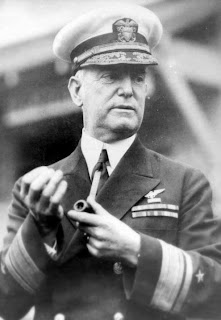William Adger Moffett was an American admiral and Medal of Honor recipient known as the architect of naval aviation in the United States Navy.
Born October 31, 1869 in Charleston, South Carolina, he graduated from the United States Naval Academy in 1890. He was the son of George Hall Moffett (1829–1875), who enlisted in the Confederate States army as a private, and was promoted for bravery on the field of battle, eventually attaining the rank of adjutant-general, Hagood's Brigade, Twenty-fifth South Carolina Volunteers.
Moffett was on USS Charleston (C-2) when she sailed across the Pacific and captured Guam.[citation needed] Ultimately ending up in the Philippines, a month after the US victory at Manila Bay. The USS Charleston then shelled enemy positions in support of American and Filipino troops at the Battle of Manila (1898).
In December 1915 Moffett received the Medal of Honor for his captaincy of the USS Chester in a daring and dangerous night landing in 1914 at Veracruz, Veracruz, Mexico. (See also United States occupation of Veracruz, 1914).
In World War I, he was commander of the Great Lakes Naval Training Center near Chicago, and there established an aviator training program. While commanding the battleship USS Mississippi (1918–1921) he supported the creation of a scout plane unit on the ship.
Moffett was also an advocate of the development of lighter-than-air airships, or "dirigibles."
He lost his life on the USS Akron when that airship, which was then the largest dirigible in the world, went down in a storm off the coast of New Jersey on April 4, 1933.
He is buried in Arlington National Cemetery, alongside his wife Jeanette Whitton Moffett.


No comments:
Post a Comment